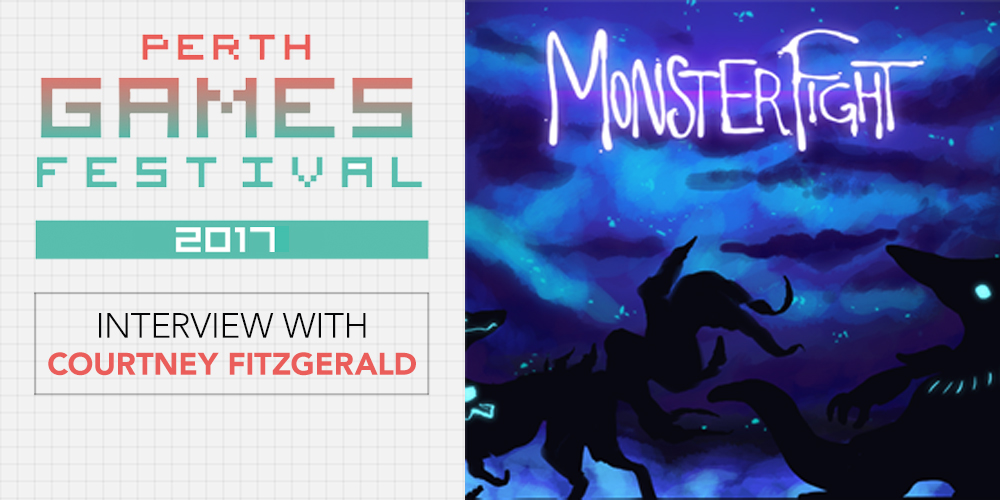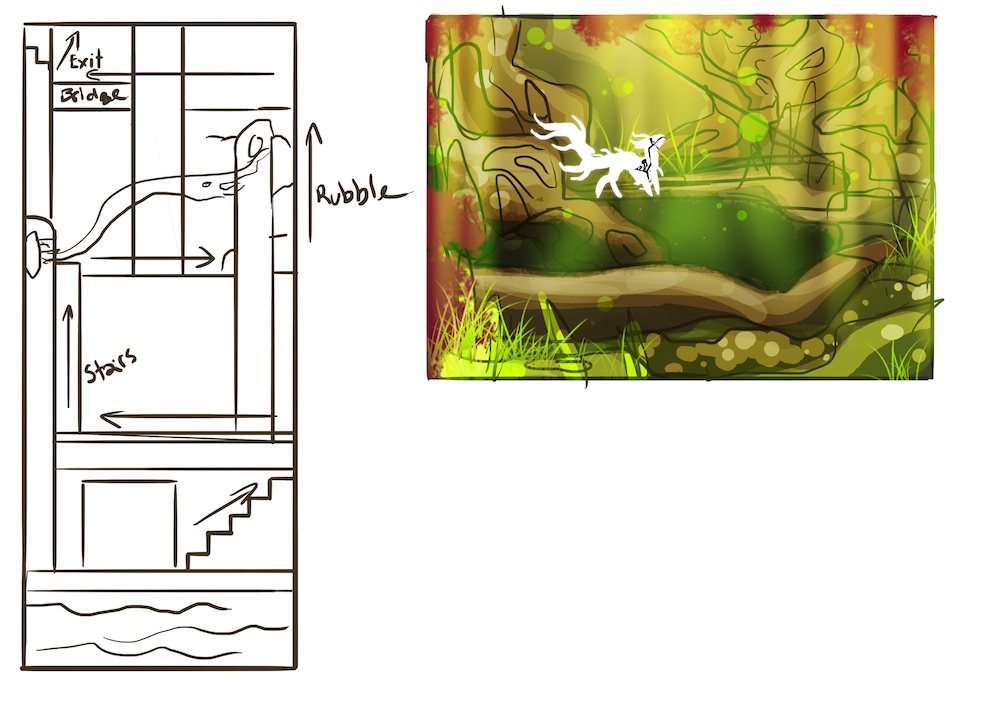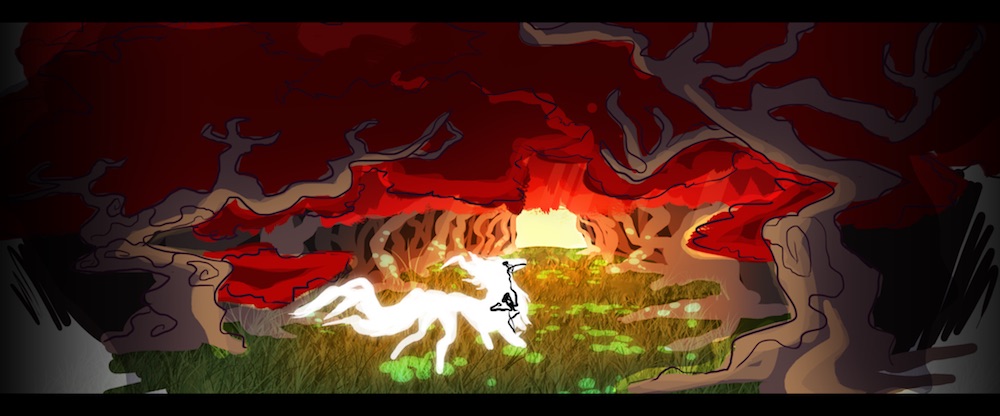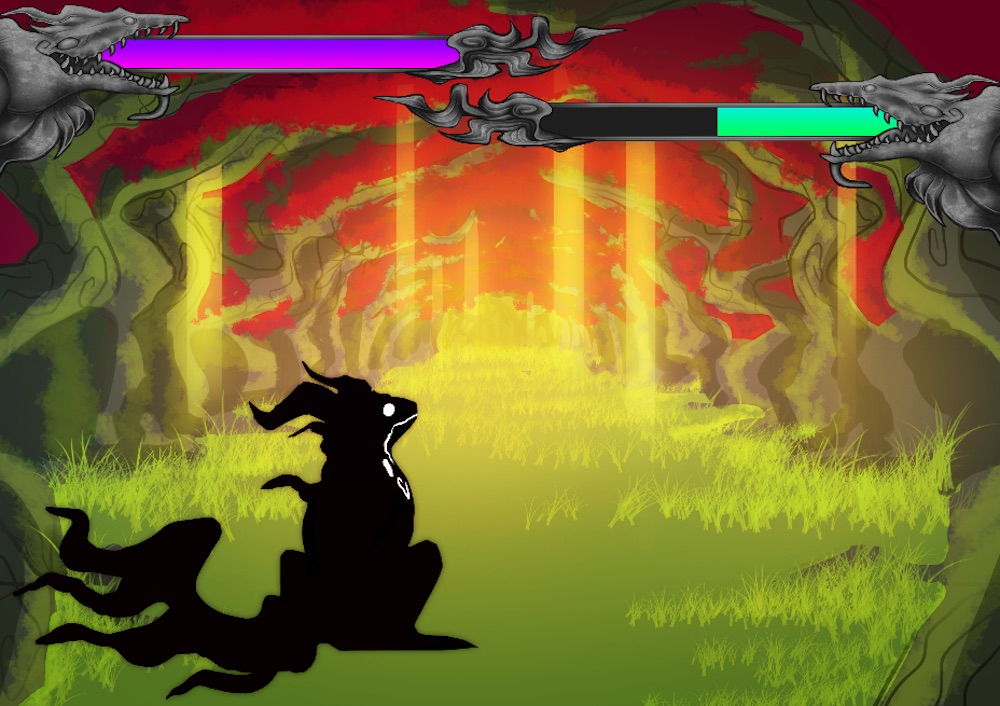
Monster Fight is a prototype game that was developed by the Violet Honey Badger Gang – a group students from Metropolitan Tafe who were placed in a simulated studio this year and tasked with presenting their work at the Perth Games Festival in November. The game itself may have been a bit raw, but it nonetheless served as yet another great example for what emerging talent can do when put on a strict deadline and forced to work together and collaborate on ideas. To learn more about the game, I caught up with Project Lead Courtney Fitzgerald.
For those who aren’t familiar with your game, can you give us an elevator pitch?
Monster Fight is an explorative RPG where you play as one of two legendary monsters. Your current goal is just to explore the world you live in and fight enemy monsters that you would encounter along the way.
Eventually, the monster you play as would evolve and get stronger to reflect the journey that you would experience, as well as the plot becoming deeper and more interesting.
Creating the game was a part of your curriculum, is that right? What was involved in that?
Our assignments revolved around making assets that would eventually go into creating a functioning video game, with our class becoming a simulated studio environment to reflect this. Some assets, however, were created before completing or even starting certain assignments, it would just be a matter of breaking down the game and adding any extras that are asked of us.

How did you conceptualise the idea for the game?
The original concept for Monster Fight was more like a pet-simulator, drawing inspiration from Tamagotchis. The idea seemed easy and small enough to create for our assignments but as we started, more and more interesting ideas were thrown out by team members, so we just kept playing around until we were happy with the final concept that you see.
How many students were involved in the project, and what was your role?
We started with a team of five with my role being the Project Manager, as I created the original pitch. As the festival deadline came closer though, we got an extra member from a different group to help us out with the game.
Can you tell us a bit about the tech that’s been used to realise your creative vision?
Our team has just been using what our Tafe provides us with. We use their standard desktops and programs such as Blender for the models and Unity to create our game. All of these programs are thankfully free, so we were able to take our works home with us and work on them there.

What’s been the biggest challenge you’ve faced during development?
Our biggest challenge was probably our time management. It wasn’t until the 25th of August that we knew that we were going to be at the festival, so we knew we didn’t have a lot of time to mess around. While we managed to get a lot of assets and coding done for the game, we could’ve gotten more done if we had just handled our time better.
What did you think of PGF, and how did it feel showing your game to the public?
PGF was amazing! There were so many great games being displayed, and everyone I spoke to was very friendly.
To be honest, though, I felt a bit disappointed showing off the build we had. Due to time constraints and some issues we couldn’t get in everything we wanted and lacked a lot of main game features (not to mention the few game breaking bugs). However, as the day went on, a lot of people seemed to enjoy it, even if it was still in development, and that made myself and my team very happy to see.
Did you receive any helpful feedback?
We did, thankfully. We had a mixture of both people giving us feedback, and us as a team watching the players and seeing what we could improve on based on their experience. Aside from some obvious game-breaking glitches, we would need to work on making the tutorial level provide more information to the player and build our levels a bit better so that they work with the camera.

Is Monster Fight just a student project or are there plans to develop it further for release?
We joked about bringing it back for next year, but it’s a bit 50/50 right now. As a team, we would love to develop Monster Fight further and see where we can go with it as this game is important to us, but I know a few of our team members, including myself, wouldn’t mind dropping Monster Fight for a while to work on our own games.
Do you have any idea of what you’ll do once you leave Tafe and enter the industry?
After I leave Tafe I plan on focusing on making short, small games that I can use to build up my portfolio. My future goal is to land a job as a concept artist, but I’ll take what I’m given.
The other members of our team included Phoebe Oldham, Matthew Huysing, Shahidah Stephens, Samuel Porter and Luke Davies. If you’re interested in following me and seeing my future content, my twitter is @Actual_Pilkat.











